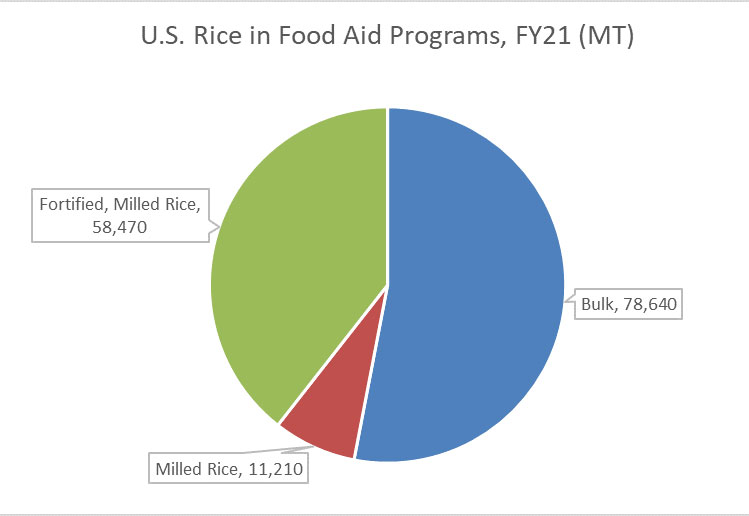 An increase of 50% over 2020 totals
An increase of 50% over 2020 totals
Oct 15, 2021
ARLINGTON, VA -- Last week, the 2021 fiscal year wrapped up, and with it another banner year for U.S. rice in international food assistance programs. From October 1, 2020, through September 30, 2021, the U.S. rice industry provided more than 148,000 MT of nutritious, high-quality rice to those in need. This is an increase of 20 percent over FY2020, which was also a big year for rice in food aid, with an increase in tonnage of more than 50 percent over the prior year.
Rice was used in 29 different countries and also well-represented across all three international food assistance programs – the U.S. Department of Agriculture’s (USDA) McGovern-Dole Food for Education and Food for Progress, as well as the U.S. Agency for International Development’s (USAID) emergency feeding programs.
Fortified rice usage also saw strong growth in 2021. More than 58,400 MT of fortified rice, or 39.4 percent of the overall total, was programmed across USAID and McGovern-Dole. This is a significant increase for fortified rice, both in terms of percentage and tonnage, which totaled 35.2 percent and 43,700 MT respectively in 2020. 2021 also ushered in the fulfillment of major Food for Progress tenders, a process that began in 2020 and will see the monetization of more than 100,000 MT of U.S. rice to support the cashew and sesame industries in West Africa.
All indications are that rice usage in food aid programs will remain high throughout 2021 and into 2022 as well. The ongoing and lingering impact of COVID-19, along with multiple global natural and man-made crises, will continue to require both food and other humanitarian assistance from the U.S. government.
Currently the Famine Early Warning System Network (FEWSNET) is tracking four global food emergencies in Ethiopia (Tigray), Yemen, Nigeria, and South Sudan. Additionally, Madagascar, the Horn of Africa, Burkina Faso, Mali, and Niger continue to be in a prolonged hunger crisis. Most of these countries have received rice and/or fortified rice through one or several U.S. government feeding programs and will likely continue to need rice for both emergency and development feeding programs.
Earlier this week, USDA budgeted nearly $250 million for ten new McGovern-Dole school feeding projects in Benin, Burkina Faso, Guatemala, Kyrgyzstan, Laos, Liberia, Madagascar, Republic of Congo, Senegal, and Sierra Leone. The projects will be implemented by five different private voluntary organizations (PVOs) and the World Food Programme (WFP). Last year, eight of nine school feeding programs utilized rice.